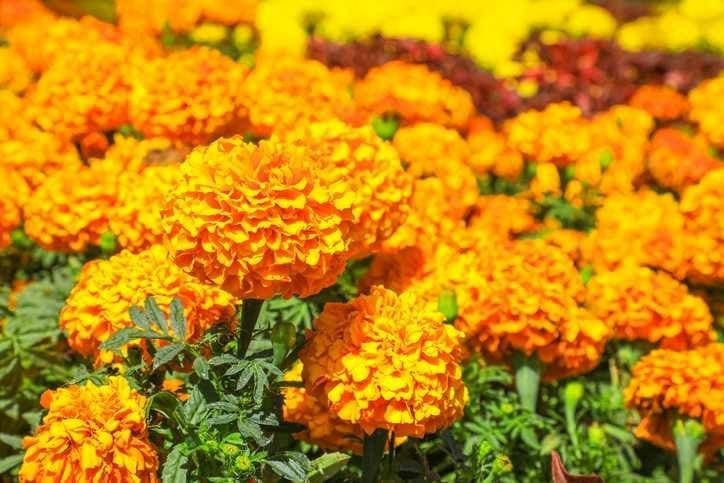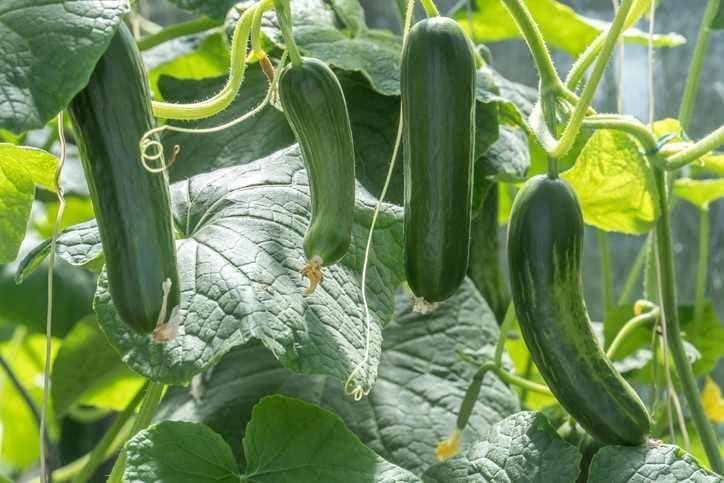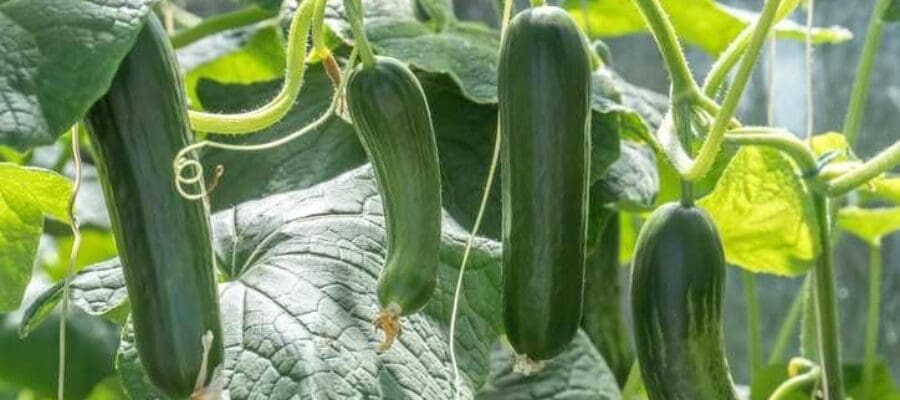Kitchen Garden reader Peter Dean, of Cambridge, sent us this item about the joys of a summer garden. This is a reader blog and views expressed by Peter may not necessarily reflect those of the magazine.
Summer is the season of growth. It is when the garden is at its most productive. There is colour from flowers, and crops of vegetables, while fruit is quietly growing and maturing ready for an autumn harvest.

As the last frosts pass in mid-May, tender plants can be planted out in the open. African marigolds will bring golden splendour to a bed, while banana palms offer a tropical edge to a border. There are so many summer flowering plants to choose from. So go hunt them out and see if they are suitable for your soil and location.
Summer vegetables for harvest include salad crops – tomatoes, cucumbers and the mix of peppers. To get a maximum yield from these plants you have to water liberally when needed and feed twice a week with a high-potash liquid feed. These are thirsty and hungry plants!
First early potatoes are ready to harvest from June, and onions, broad beans, French beans and runner beans from August onwards.

Pests and diseases may be a problem now, especially if there is high humidity from summer rainstorms. Pests, such as green and black fly (aphids) can increase suddenly. The females are viviparous, which means they produce young through asexual reproduction. The male isn’t needed. And they can produce hundreds of babies a day, every day! They suck the sap from the host plant and will weaken it, eventually killing it.
Thankfully, there are several other creatures, including birds, hoverflies and ladybirds that love eating aphids and keep the numbers down.
Greenfly are common on roses and blackfly on broad beans. They should be controlled, if not naturally, then by some other means as they spread viruses as they feed and can cause serious damage to sensitive crops. Or on beans, just pick out the growing tip and compost it.

Fungal diseases can be found on courgette leaves in summer when a white ‘dust’ of powdery mildew may appear. The spores are in the air. Or chocolate spot or rust, diseases of broad bean leaves. Stems and pods can show brown circles with tiny spots in the centre. Or black spot on rose leaves that make the plant look unsightly. These diseases don’t often kill the plant but can damage the photosynthetic area and productivity. Beans and courgettes can still be eaten. It is best to remove and burn black-spotted rose leaves – do not compost them in your compost bin as you will spread the disease.
Modern gardening is all about maintaining the ecological balance in your plot. By providing wild birds, insects and other creatures a favourable habitat to survive in, they will then help you control the garden pests. Healthier crops lead to improved yield.
So, work wherever possible with nature, not against it. Pesticides should be a last resort. Nature always wins. I know it’s a cliche, but it is true.





